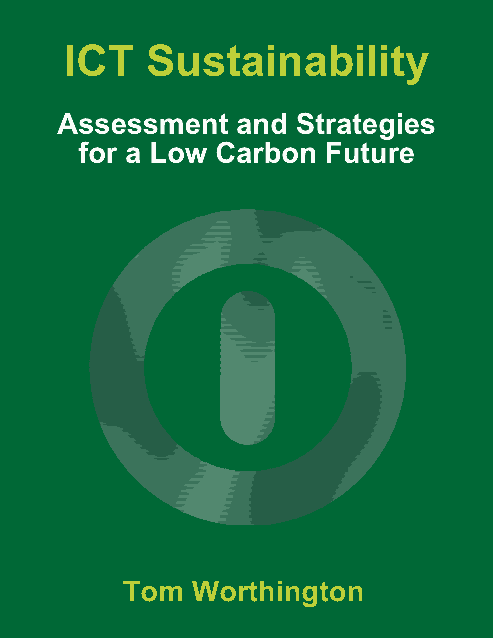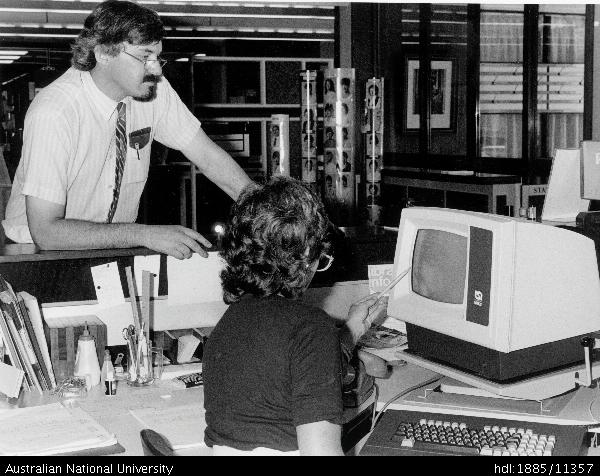Description: In January Tom completed a masters in educational technology in North America, studying the design of on-line mobile courses and use of e-portfolios (Worthington, 2016). He will discuss the experience of being an international on-line student and the implications for Australian Higher Education. Tom argues that we can expect 80% of university education to be delivered on-line by 2020 and has produced a book on "Digital Teaching" available free on-line, to help get there (Worthington, 2017).
These are the notes for the presentation using HTML Slidy. If viewing the slides you can press "A" to display these notes (and press "A" again to hide them). To advance to the next slide, press "page down", or click the left mouse button.
After seventeen years working as a computer professional for the Australian Government, I decided to become a private computer consultant in 1999. My job would be short term projects for companies and government agencies, about their computer strategies and policies. This role would involve extended periods of time working alone in my home office.
To give some continuity, I volunteered to help out at local universities and was appointed a Visiting Fellow in what is now the Research School of Computer Science at the Australian National University. In return for a desk and status as academic staff, I helped out with research and teaching. I found myself drawn to the issue of how to use computer technology for the teaching. It seemed obvious that computers and the Internet should be utilized for teaching computer science students, but how and what?
Designing an on-line course is much the same as face-to-face. This is illustrated with the four pictographs by Carlos Sarmento (from the Noun Project CC BY 3.0 US), used on the cover of "Digital Teaching". The instructor needs to:
- Provide ebooks and other curated content on the topic;
- Facilitate discussion between the students;
- Provide tools and techniques for the student to explore the topic; and
- assessment, including formative feedback, to help them learn.
The instructor can get away with making up a face-to-face course as they go along, but an on-line course needs to be carefully designed and tested in advance.
Keep in mind that what students like is not necessarily the same as what helps them learn, or what they will actually use. Offered the option of face-to-face lectures, students will say they want them, but most will then not turn up. Students prefer high quality videos, but video quality make no difference to learning.
The book "Digital Teaching In Higher Education Designing E-learning for International Students of Technology, Innovation and the Environment" is a collection of essays from the work I did for a Masters of Education in Distance Education at Athabasca University.
Courses of the MEd require the student to work on real educational content. For this I chose to work on my existing online course ICT Sustainability, which was already being run by (ANU and Athabasca University. Also I designed modules for a new course "Innovation, Commercialization and Entrepreneurship in Technology".
This allowed me to try out course enhancements on my fellow students and then put them into practice. As an example, I first looked at peer assessment as part of my studies for the MED and then implemented it in practice for the ICT Sustainability course at ANU (where it worked well). The innovation course is yet to be implemented (more on that later).
The Capstone e-portfolio requires the students to reflect on their learning using five artifacts, which usually are a subset of the assignments already submitted in coursework (Hoven, 2015, p. 23). Rather than just leave the student to work this out for themselves, the e-portfolio is structured as a course, with an instructor and deliverables. Students receive feedback from the instructor and provide comment on each others draft e-portfolios.
The Athabasca MEd capstone option requires the student to present for an hour, with thirty minutes presentation and thirty minutes answering questions, via a webinar (video conference). During preparation of my e-portfolio I proposed to pre-record the presentation and then take the questions live. This was because I was one of the most distant students taking part in the program, so there were more likely to be communication problems. This option was approved and became a precedent, allowing other students the option to pre-record their presentations. However, in the end I opted for a live-to-air presentation.
After checking that I had three working computers with two separate Internet connections (one wired and one wireless for backup), I felt I was ready for the presentation. However, a few minutes before I was due to start, a pile-driver started up outside my office window, along with an electric saw down the corridor and work removing ceiling panels outside my door. Moving the equipment to a quieter spare office, I found that one computer could transmit sound and one receive, but not at the same time. As a result I gave the presentation with no audio feedback (instead asking the audience to occasionally give me a "Okay" in the text box). For Q&A I had to switch the microphone off, place my head down on the speaker of my laptop, listen to the question, then switch the speaker off and the microphone on to answer. The result was a slightly stilted conversation. This perhaps was an untended lesson in the difficulties of DE.
The most useful aspect of being an on-line student of education is "dogfooding", a term coined by Harrison (2006) for the practice of those who develop a product to use it. In the case of education courses, the designers, and instructors demonstrate that the technology they are advocating works and the students learn what it is like to be a DE student, before being an instructor or designer. Each course reminded me how crushingly lonely being a student can be, especially a distance student and even more so for an international student. As a result, I take additional care now to ensure my course instructions as well as content are very clear and try to avoid cultural confusion. However, the experience of being a DE student can also be liberating, compared to a part-time, after-hours, campus student.
How to fund on-line education remains a problem world-wide. Athabasca University has had difficulty in fitting its on-line education model into the conventional funding structures of government (as have Australian institutions, particularly University of New England).
Athabasca University (AU) and the Government of Alberta have appointed Dr. Ken Coates (University of Saskatchewan), to lead a review into how to make the university financially viable. This follows a report in 2015, which warned of insolvency by 2016/2017.
The report "Online College Students 2016: Comprehensive Data on Demands and Preferences" from cloud HE services provider Learning House, Inc reports on a survey of 1,500 US higher education students. There are no great surprises in the report and the issues which students find important are ones that AU could address: price, prior credit, m-learning, speed, group work and work skills.
Useful guidelines have been drafted by Dr Cathy Stone for the "Opportunity Through Online Learning project" (Dr Cathy Stone, National Centre for Student Equity in Higher Education
Australian universities are introducing lecture recording and learning management systems, allowing on-line delivery of education. However, university academics still cling to the idea that the typical student attends lectures and has the time to sit around the campus having deep intellectual discussions. Also, the assumption is that the average student will want to go on to postgraduate research and obtain a tenured research position.
Less than half of students attend lectures: 30% at ANU (Warrington, 2015).
A recent item in the ANU student newspaper, Woroni, expresses concern over a new on-line program. The concern is not that the on-line program is inferior, but is superior to the existing lecture based program, so disadvantaging the campus-based students (Kirpalani 2016).
Much of what is proposed under the banner of digital, electronic or on-line learning is not new in concept. Access to ubiquitous digital technology makes it much easier to implement.
While much education can be undertaken on-line, not all can. Students need to learn from experienced members of their discipline, learn to work in teams and learn to use equipment not available at home. A reasonable blend would be 80% on-line and 20% in a classroom.
Courses can be designed for on-line delivery and then necessary, or desirable, classroom components can be added.
Fraser, Greenfield, and Pancini (2016) suggest that early career academics need integrated and intentionally designed transition strategies, like those provided for students. I suggest we could go further and teach students to be teachers.
In addition to training in how to teach, students will also need training in how to be entrepreneurs. Graduates cannot expect to have a full time "permanent" jobs, so they need to learn to work in self-managed start-up teams, develop products and pitch them to customers.
Last semester I tutored three teams of ANU Techlaucher students in a program devised by Dr. Shayne Flint. This provides a model which could be used more generally for teaching "soft" as well as hard skills to university students. This can be applied to any university program where the students are learning skills which can be applied in the workplace. The use of on-line project management tools allows for teaching of techniques of virtual teamwork and can be used with on-line distance education students.
There is now a demand for students to learn "soft skills" and "Innovation". But can this be done online? To answer that question I design a student project, to take the materials on innovation I prepared during my MEd and turn them into an on-line, mobile based course. The results should be available in late 2017.
















